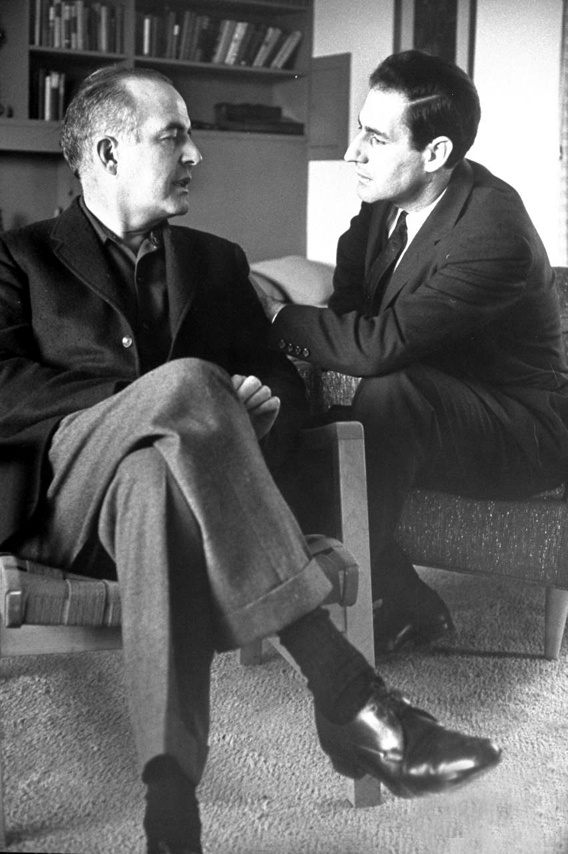 |
| Barber & Menotti |
The piece has most often been presented as a vehicle for a star soprano, beginning with Eleanor Steber in the premiere, and since then Dame Kiri Te Kanawa and Lauren Flanigan have both been featured centerpieces of major revivals.
Finalist of the Opera America Director-Designer Showcase in 2008-2009 for her team's production concept for Einstein on the Beach, Elise Sandell made her mainstage directing debut at Tulsa Opera in 2007, and is regularly engaged on directing staffs of major companies all around the country. Here she contributes an intriguing case for a Vanessa that is much more than a sumptuous soprano vehicle.
--
The words “opera” or “domestic drama” are far too narrow to define Samuel Barber and Gian Carlo Menotti’s Vanessa. It’s a ghost story, or maybe it’s a haunting. It’s a group of people haunted by their pasts, their futures, their relatives, their fears, each other.
Although the relationship between these works can be described as tenuous at best, I am inspired by Isak Dinesen’s Seven Gothic Tales when I think of Vanessa. Menotti and Barber are rumored to have been stimulated by this collection of stories when composing this opera, although these specific characters and plot points appear nowhere in her work. Dinesen also provides us with an important point of view…that of a woman, for Isak Dinesen is the pen name of one Karen Blixen.
 |
| Danish author Karen Blixen, whose most famous works included Seven Gothic Tales, Out of Africa, and Babette's Feast. |
Imagine a space that is a trap and a whole world all at once. The Baroness’s manor is a hall of mirrors, a magical space that transforms itself, the characters in it, even the audience point of view. While nostalgic and elegiac in terms of furniture and clothing, nothing will be fixed, and the action will play out like a memory play. (Whose memory are we watching with? Is it accurate?) Some of the furniture and other objects will be outsize, highlighting the slightly surreal behavior of these characters.
Video design will figure prominently into the production. The mirrors that haunt these characters will be mirrored video screens; they are the weather, the jardin d’hiver, thoughts inside the characters heads, even inside our own heads.
The handsome young stranger Anatol is transformed into a demon, then to his father, then to an angel. The Old Baroness is transformed into her desperate granddaughter, the skulls and other memento mori of which Blixen was so fond will appear. Lighting can transform a living hell for one character into a romantic fairy tale for another, as quickly as Barber’s music turns from turmoil to celebration.
Is this a story happening now in front of our eyes, or is it a story long past, being re-told by characters long dead? Do these characters have the power to make different choices? Did they ever? What am I really seeing? What is really true? What is identity, and how can the people who surround us influence or change it?
The audience will leave with these and many other questions…more questions asked than answers given.
Learn more about Elise Sandell's work at www.elisesandell.com







No comments:
Post a Comment